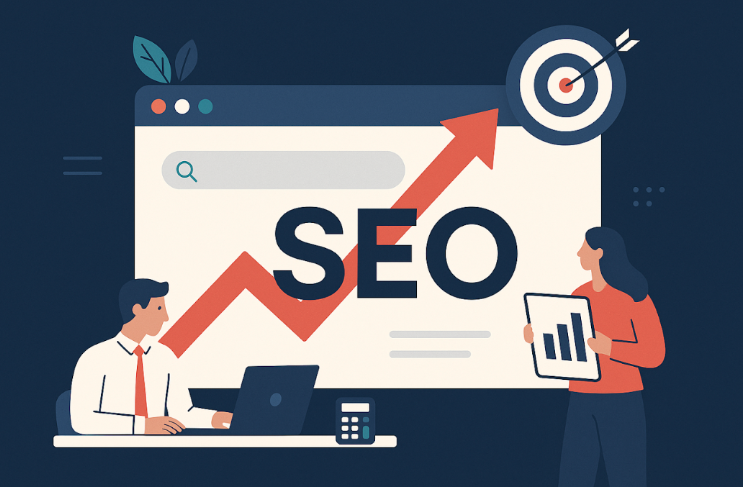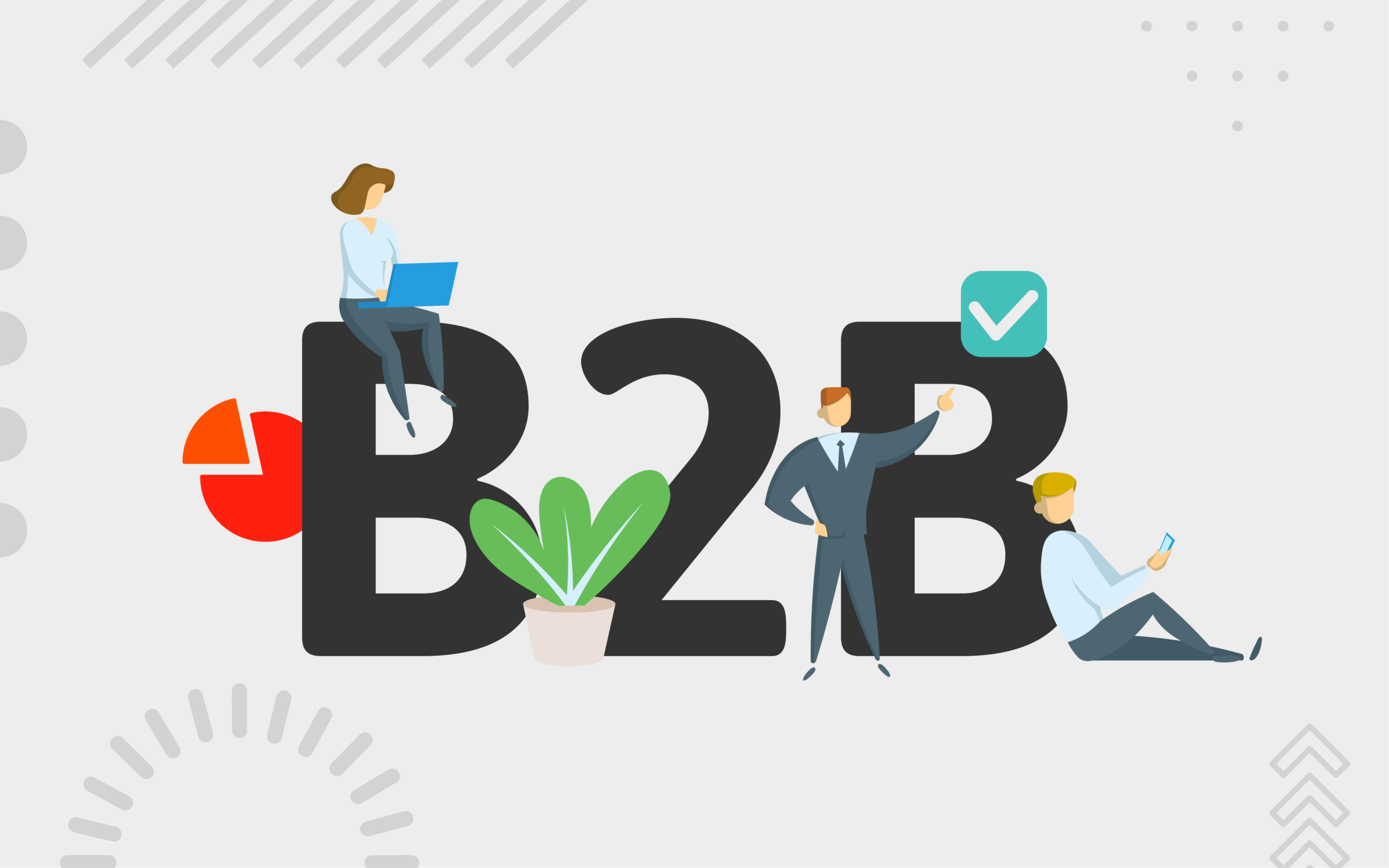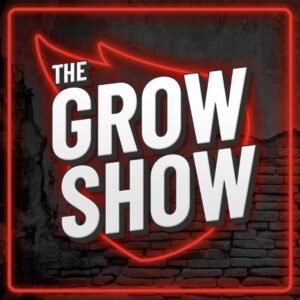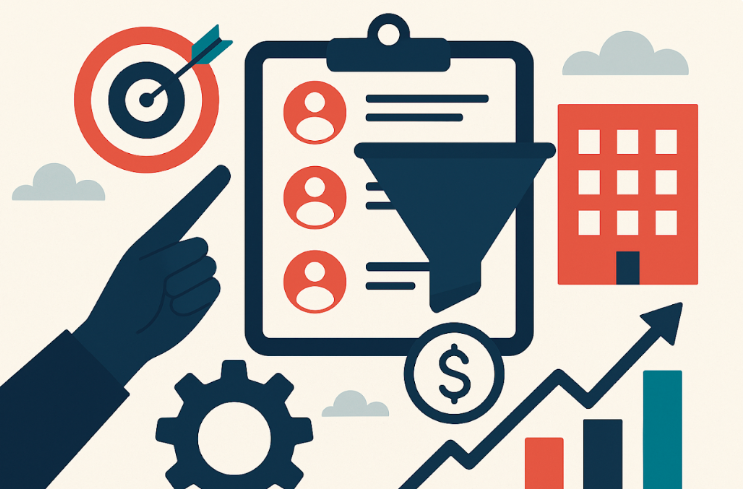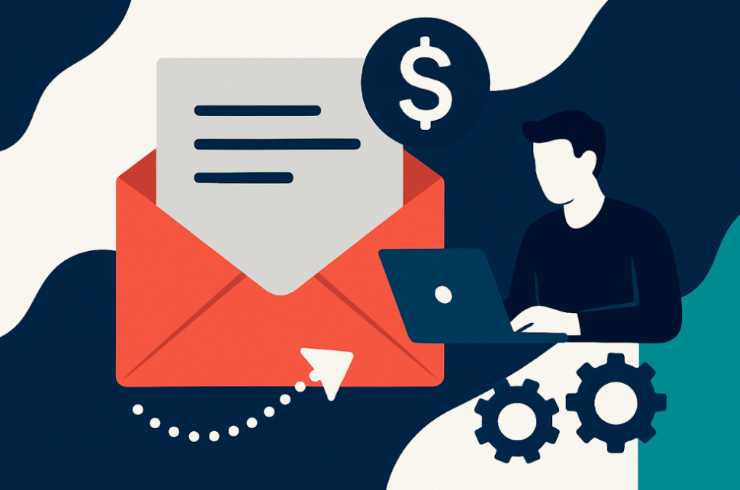Tracking the right metrics can make the difference between closing a deal and losing out to a competitor. Sales Key Performance Indicators (KPIs) are essential for guiding your team, identifying areas of improvement, and driving data-based decisions.
Tracking B2B sales KPIs can benefit your operations in many ways. You can optimize your customer experience and sales process and even boost your revenue. However, if you don’t know what you need to track, the information just continues to gather dust. By keeping an eye on these categories and KPIs, you can curate the perfect process for your business.
Contents
- 1 What Metrics Should My Business Be Tracking?
- 2 Sales Activity KPIs
- 3 Leads & Pipeline KPIs
- 4 Sales & Conversions KPIs
- 5 Customer Acquisition & Retention KPIs
- 6 How to Improve Your B2B Sales By Measuring Your KPIs
- 6.1 Optimize Your Sales Processes for Efficiency
- 6.2 Direct Training Workshops for Your Sales Team
- 6.3 Enhance Lead Qualification Criteria
- 6.4 Leverage Data Analytics for Informed Decision-Making
- 6.5 Boost Customer Retention with Targeted Strategies
- 6.6 Partner with a B2B Marketing Group for Expert Support
- 7 Key Takeaways
What Metrics Should My Business Be Tracking?
First things first, your company should evaluate its current sales activity, pipeline management, lead conversions, and customer retention efforts. These are the four overarching categories that every business needs to consistently monitor to ensure steady growth and optimize sales performance.
Why these four? Sales activity directly impacts your revenue and overall company growth by measuring the daily efforts of your sales team. Leads and pipeline management bring in new opportunities and help guide prospects through the sales funnel. Sales and conversion metrics reveal the effectiveness of your team in turning those leads into paying customers.
Lastly, customer acquisition and retention metrics help you understand how well you’re attracting new customers and keeping them satisfied long-term. With these essential categories in mind, let’s explore the specific KPIs your business should be tracking.
Sales Activity KPIs
Sales activity KPIs measure the daily, weekly, or monthly activity of your sales team by tracking the actions that lead to successful conversions. These metrics help determine how much time your sales team spends on high-value activities, like talking with prospects, demoing products, and following up on leads. By monitoring these KPIs, you can ensure that your team is focusing their efforts on activities that drive results and aim to increase revenue.
1. Percentage of Time on the Phone
One of the most straightforward yet crucial KPIs, this metric tracks how much time sales reps spend actively engaging with prospects over the phone. Time on the phone is critical, especially in B2B sales, where building relationships and having detailed conversations can be the key to securing a deal.
To calculate this, divide the number of hours spent on calls by the total work hours, then multiply by 100. This will give you the percentage of time spent on the phone, which can be used to assess whether sales reps are prioritizing their outreach effectively.
Percent of time on phone = (hours spent on calls / total work hours) x 100
2. Percentage of Time Demoing
Product demos are a key part of converting prospects into paying customers, particularly in the B2B space, where clients often require a deep understanding of the product’s functionality.
Tracking the percentage of time sales reps spend demoing your products can help measure productivity and indicate how much effort is being invested in high-value sales activities. If a significant portion of time is spent on demos but conversion rates are low, it could be an indication that more training is needed to improve demo quality.
Percent of time demoing = (time spent demoing / time spent with client on visit) x100
3. Average Follow-Up Attempts
This KPI measures the number of follow-up attempts made before a deal is closed or abandoned. Follow-up is often where deals are made or lost, and understanding how many attempts are necessary on average to close a deal can help refine sales processes. If reps give up too early, they may be missing out on opportunities, while too many follow-ups could indicate a lack of preparedness or ineffective communication.
Leads & Pipeline KPIs
Leads and pipeline KPIs provide insights into how well your team is generating and managing leads. These KPIs are essential for understanding how prospects move through the sales funnel and help identify bottlenecks in the process.
1. New Leads by Source
Knowing where your leads are coming from is key to optimizing your lead generation strategies. Whether it’s through inbound marketing, outbound efforts, referrals, or paid advertising, tracking the source of new leads will help you focus your efforts on the channels that yield the best results. For instance, if your highest-converting leads are coming from LinkedIn but you’re allocating more resources to another platform, it may be time to reassess your marketing spend.
2. Lead-to-Opportunity Ratio
This KPI measures the effectiveness of your sales team in converting leads into qualified opportunities. A high lead-to-opportunity ratio indicates that your team is doing a good job of nurturing leads and turning them into viable prospects. To calculate this ratio, divide the number of opportunities created by the total number of leads generated, then multiply by 100. If this number is low, it may point to a need for better lead qualification processes or improved sales training.
Lead-to-opportunity ratio =
(total number of opportunities / total number of leads) x 100
3. Pipeline Velocity
Pipeline velocity measures how quickly prospects move through the sales funnel. A slow-moving pipeline can be a sign of inefficiencies, such as long sales cycles or delays in follow-ups. To calculate pipeline velocity, use the formula: (Number of opportunities x Average deal size x Win rate) / Sales cycle length. By improving any one of these factors—such as increasing your win rate or shortening the sales cycle—you can increase the overall velocity of your pipeline and close deals faster.
Pipeline velocity =
(number of opportunities x average deal value) x win rate / length of sales cycle in days
4. Email Marketing KPIs
Email marketing remains one of the most effective tools for generating leads and nurturing prospects through the sales pipeline. To maximize its impact, tracking the right KPIs will help you assess the performance of your campaigns and identify areas for improvement. These KPIs not only gauge the success of individual email campaigns but also provide valuable insights into how well your email efforts support your lead generation and B2B sales strategies.
- Open Rate: Measures how many recipients open your emails. A low rate suggests your subject lines may need improvement.
- Click-Through Rate (CTR): Tracks how many recipients clicked a link in your email. A strong CTR shows your content is engaging and driving action.
- Conversion Rate: Tracks how many clicks lead to a desired action, like signing up or purchasing. This is crucial for tying email efforts directly to revenue or lead generation.
Sales & Conversions KPIs
Sales and conversion KPIs track the outcomes of your sales efforts, providing insights into how effective your team is at turning opportunities into revenue. These KPIs are crucial for assessing individual and team performance and understanding overall sales effectiveness.
1. Sales Conversion Rate
The sales conversion rate measures how effective your team is at closing deals. A high conversion rate indicates that your team is successfully moving prospects through the sales funnel and turning them into customers. To calculate this, divide the number of closed deals by the number of opportunities, then multiply by 100. If your conversion rate is low, it may signal that your team needs more training in closing techniques or that your opportunities aren’t being properly qualified.
2. Win/Loss Ratio
This KPI compares the number of deals won to those lost. Understanding your win/loss ratio can provide valuable insights into your sales team’s performance, highlighting areas where improvements are needed. A low win rate might indicate issues with pitching or handling objections, while a high win rate could show that your team is excelling at closing deals.
Win/loss ratio = (number of won opportunities / number of lost opportunities)
3. Monthly Closed Deals
Tracking the number of deals closed each month is an easy way to measure the overall productivity of your sales team. This KPI allows you to identify trends over time, such as seasonality in sales or the impact of specific marketing campaigns. Monitoring this metric consistently can help you set realistic goals for your team and adjust strategies to improve performance.
Customer Acquisition & Retention KPIs
Customer acquisition and retention KPIs help you measure the effectiveness of your efforts to attract new customers and keep existing ones. In B2B sales, where customer relationships are long-term and often involve significant investment, tracking these KPIs is critical for sustained growth.
1. Customer Acquisition Cost (CAC)
CAC measures how much it costs to acquire a new customer, including all sales and marketing expenses. This metric is crucial for understanding the efficiency of your customer acquisition efforts. A high CAC might suggest that your sales process is too expensive, while a lower CAC indicates a more efficient acquisition strategy. To calculate CAC, divide your total sales and marketing costs by the number of new customers acquired.
Customer acquisition cost = total sales and marketing cost / number of new customers
2. Customer Retention Rate
Retaining existing customers is often more cost-effective than acquiring new ones, making this an essential KPI for any sales team. A high retention rate indicates that customers are satisfied with your product or service and are likely to continue doing business with you. To calculate this, subtract the number of new customers acquired during a specific period from the total number of customers at the end of that period, divide by the number of customers at the start, and multiply by 100.
Retention rate =
(number of customers at the end of a period – number of customers acquired during a time period / starting number of customers) x 100
3. Churn Rate
Churn rate measures the percentage of customers lost over a specific period. High churn rates can signal dissatisfaction with your product or service, making it essential to track and address any issues that may be causing customers to leave. A low churn rate indicates strong customer loyalty and satisfaction.
Churn rate = (number of customers lost in a period / starting number of customers) x 100
Having trouble keeping up with your B2B sales metrics and KPIs? Abstrakt Marketing Group has the perfect solution for improving your lead generation and pipeline tracking efforts. With professional teams of specialists that consistently monitor your process, you can rest assured your metrics are contributing to growth.
How to Improve Your B2B Sales By Measuring Your KPIs
Tracking sales KPIs is just the beginning—consistently improving them is essential for driving long-term success. Whether you’re looking to enhance lead generation, streamline your sales pipeline, or boost conversions, these strategies can help you optimize your KPIs and achieve better results.
Optimize Your Sales Processes for Efficiency
To improve KPIs like pipeline velocity and conversion rates, it’s essential to streamline your sales processes. Review every stage of your sales funnel, from lead generation to closing, and look for bottlenecks that slow down progress. Implement automation tools to reduce manual tasks and improve communication between sales and marketing teams. These changes can accelerate your sales cycle and increase the number of deals closed.
Direct Training Workshops for Your Sales Team
Your sales team’s skills directly impact key KPIs, such as win/loss ratio and sales conversion rates. Offering regular training on objection handling, negotiation techniques, and product knowledge will empower your team to perform better. Training should focus on specific areas that can enhance KPIs, like improving follow-up efforts or delivering more compelling product demos.
Enhance Lead Qualification Criteria
Improving the quality of leads that enter your pipeline is one of the most effective ways to boost KPIs, like the lead-to-opportunity ratio and conversion rate. Review your lead qualification criteria to ensure that your team is focusing on high-value prospects. Using advanced analytics tools or partnering with a B2B marketing group can help you refine these criteria and target leads that are more likely to convert.
Leverage Data Analytics for Informed Decision-Making
Analyzing sales data can reveal critical insights into your team’s performance and help you make informed decisions to improve KPIs. Use data to identify trends, spot weak points, and adjust strategies in real time. Tools like CRM systems with integrated data analytics provide real-time tracking and reporting, ensuring that your decisions are based on accurate, up-to-date information.
Boost Customer Retention with Targeted Strategies
Customer retention KPIs, like churn rate and customer lifetime value, can significantly impact your long-term success. Focus on building strong relationships with your current customers through personalized communication, excellent customer service, and post-sale follow-ups. Partnering with a B2B marketing group can help you develop loyalty programs and content strategies that keep your clients engaged and satisfied.
Partner with a B2B Marketing Group for Expert Support
Improving KPIs across the board often requires expert guidance and advanced tools. By partnering with a B2B marketing group, you gain access to specialized knowledge, industry best practices, and data-driven strategies that can enhance your sales efforts. Marketing groups can help with lead generation, content creation, automation, and KPI tracking, ensuring that your team focuses on high-impact activities that drive growth.
Key Takeaways
Improving your B2B sales KPIs requires a strategic, data-driven approach across various aspects of your sales process. From refining day-to-day activities to focusing on long-term customer retention, every area plays a vital role in driving growth and efficiency.
- Sales Activity KPIs: To improve metrics like time on the phone or demoing, optimize your sales team’s daily operations. Ensure they are focused on high-impact activities, such as engaging with prospects and refining their follow-up strategies. A well-trained sales team and streamlined processes lead to more efficient lead management and, ultimately, more closed deals.
- Leads & Pipeline KPIs: Your sales pipeline’s health depends on how well you generate and manage leads. Track metrics like new leads by source, lead-to-opportunity ratio, and pipeline velocity to understand where leads are coming from and how quickly they are moving through the funnel. Qualifying leads more effectively and maintaining an active, flowing pipeline will boost your chances of closing deals faster.
- Sales & Conversions KPIs: Metrics like sales conversion rates, win/loss ratio, and monthly closed deals show how effective your team is at turning opportunities into revenue. By focusing on improving closing techniques, handling objections, and refining negotiation skills, your sales team can increase their conversion rates and bring in more revenue.
- Customer Acquisition & Retention KPIs: Balancing customer acquisition with retention is key to sustainable growth. KPIs like customer acquisition cost (CAC), retention rate, and churn rate help measure how well you’re acquiring and keeping customers. Retention strategies, such as personalized outreach and loyalty programs, can improve customer lifetime value and reduce churn.
Abstrakt Marketing Group is your go-to partner for optimizing B2B sales metrics. With a deep expertise in lead generation and pipeline management, we provide custom strategies that align with your goals to drive growth and efficiency. Our advanced tools help track and improve key KPIs, ensuring increased conversions and better customer retention. Let Abstrakt help you unlock the full potential of your sales process. Contact us today to see how we can elevate your performance and boost results.

Madison Hendrix
Madison has worked in SEO and content writing at Abstrakt for over 5 years and has become a certified lead generation expert through her hours upon hours of research to identify the best possible strategies for companies to grow within our niche industry target audiences. An early adopter of AIO (A.I. Optimization) with many organic search accolades - she brings a unique level of expertise to Abstrakt providing helpful info to all of our core audiences.
- Madison Hendrix#molongui-disabled-link
- Madison Hendrix#molongui-disabled-link
- Madison Hendrix#molongui-disabled-link
- Madison Hendrix#molongui-disabled-link
